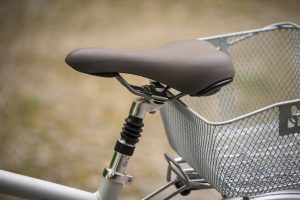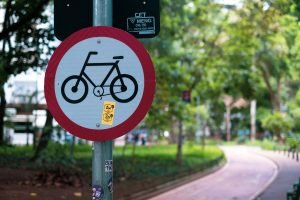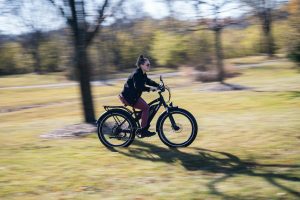Bike-friendly cities – best cities for cyclists in America 2023
- Michael
- Last Updated August 13, 2023
We are a reader supported site. We earn commissions when you buy through links on our site. Learn more.
Nowadays, the most common form of travel is the automobile. While there’s nothing wrong with that, it gets exhausted to hop in the car every day, knowing you’re about to sit in hours of traffic.
Some days I wish that I could use my bike as my primary means of travel. Unfortunately, that’s not an option everywhere.
Yet, if you find yourself in any of the cities listed here as the most bike-friendly cities in America, count your blessings! You’re one of the luckiest people in the country!
What Does it Mean for a City to be “Bike-Friendly?”
We hear this term thrown around all the time, but what does it really mean to be a “bike-friendly” city?
It turns out, such a designation isn’t always exclusively dependent on public opinion. Instead, it can be officially measured via census data, community behavior, and demonstrable municipal initiatives.
Even a city’s infrastructure (i.e., how many bike paths are there, ease of travel, whether those paths are protected, path connectivity, etc.) is a strong indicator of how truly “bike-friendly” it is.
Although several influential groups are responsible for ranking American cities in terms of bike-friendliness, the leading two organizations include the League of American Bicyclists and People for Bikes.
All cities featured below earned above 3.2 (out of 5) from a People for Bikes 2019 survey covering more than 560 cities.
San Luis Obispo, CA
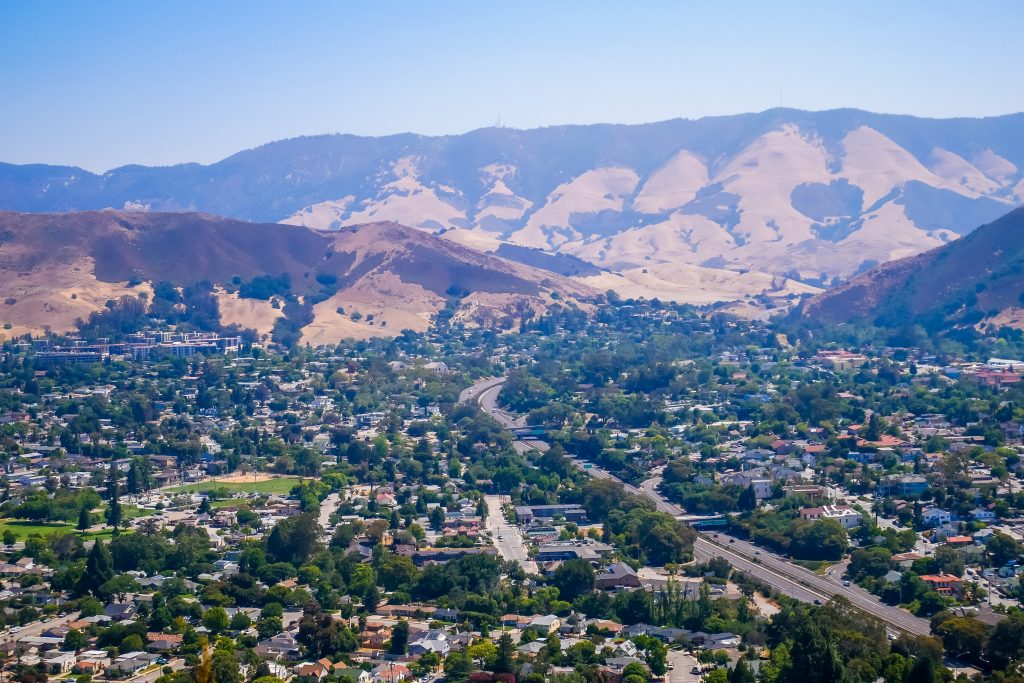
Many know San Luis Obispo (also known as “SLO”) and similar California cities to be a haven for bikers. Whether you are looking to use your cycle primarily for commuting, leisure, or competitive sports, this is the perfect city to visit.
In the People for Bikes’ 2019 mass survey, SLO earned a score of 3.5, the highest of all 560+ locations listed in their raw datasheet.
The city has retained its place as the shining example of bike-friendliness for several years now, both statistically and in California locals’ perspectives.
In fact, SLO recently committed to an official policy to expand bike transit to comprise 20% of the municipality’s transit.
The city hasn’t slowed down since 2015 when an entire 7.4% of the city’s population rode bikes for commuting purposes alone. For SLO County as a whole, more than 2% of the population ride their bikes to work—over three times the national average (0.61%).
The city earned a score of 60 for how accessible amenities such as healthcare and dentistry, groceries, and social services were by bike. The score is still one of the highest on record.
Its highest score for bike accessibility, by far, was higher education. SLO’s schools are undoubtedly designed with cyclists in mind. You don’t have to worry about having a vehicle if you’re planning on going to school out here.
Madison, WI
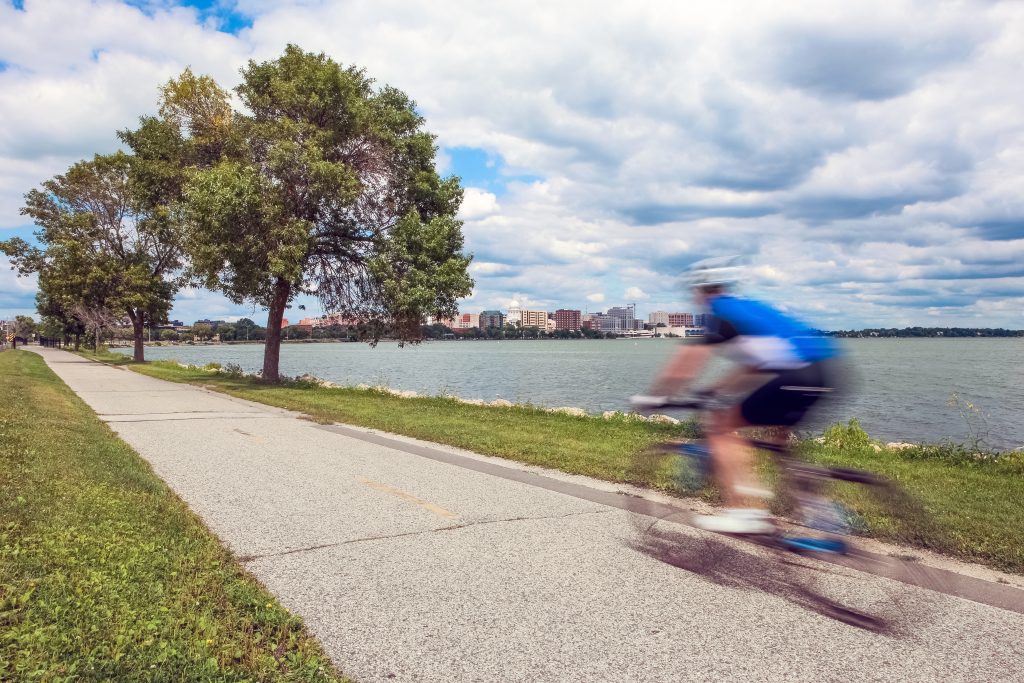
Madison, WI is among the nation’s best possible places to travel to as a biker, earning a score of 3.5 in the aforementioned survey.
Although the city’s great for several types of biking, it’s best for recreational cycling, especially in natural spaces like public parks.
People for Bikes rated Madison a 75 out of 100 for convenience of access via bike for parks and 69 for trails.
You can also commute to public service establishments like social services (which earned a 60 for accessibility) with more ease than most places in the United States.
Cyclists’ favorite places to travel to in the area include the Lake Monona loop, the Arboretum, and Cam-Rock bike trails, to name a few.
The city celebrates its biking culture so affectionately that they even hold events like those listed below to bring the community together each year:
Officials are currently focused on expanding the local cycling network, with one specific goal being to increase the total number of protected bike paths throughout the city.
Santa Barbara, CA
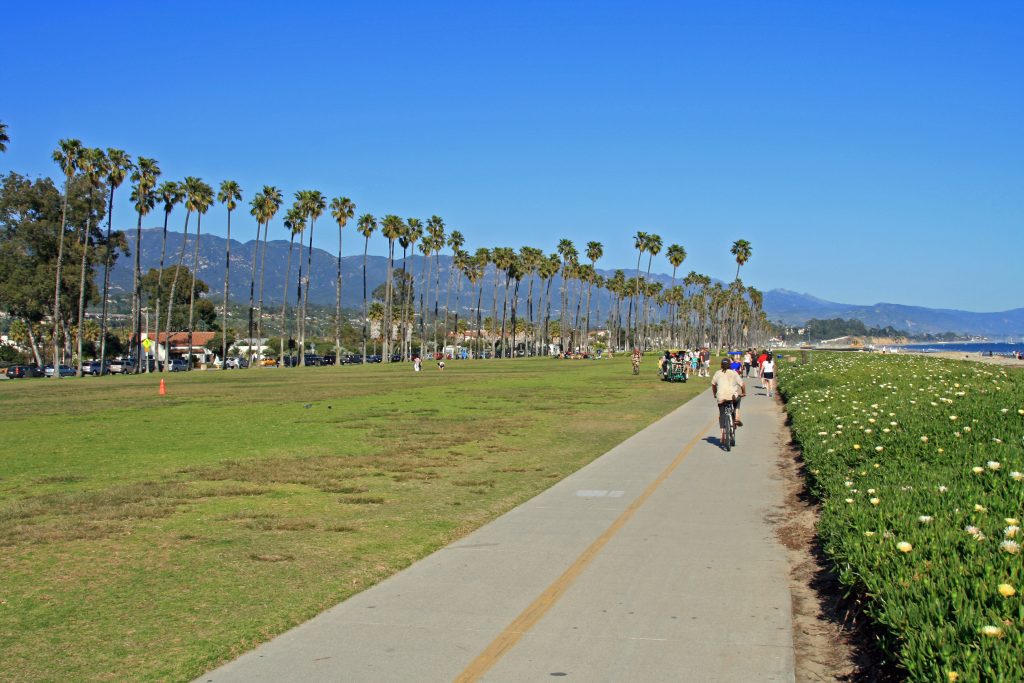
It may come as a bit of a shock to Santa Barbara locals that their beloved town did not fall at the top of the list (especially those who live in the part of town close to the colleges, especially Goleta and Isla Vista).
So much about this beautiful beach city seems to revolve around simplified bike travel, a significant factor in its earned score of 3.3.
Realistically, you’ll find that the majority of the ease-of-travel via cycling is largely concentrated in the higher education hub.
The city as a whole was marked only as a 38, illustrating that there’s room to grow in its bike travel network.
Fortunately, this won’t be a problem for long.
Santa Barbara officials developed an entire “Regional Bicycle and Pedestrian Plan” dedicated to the city’s cycling trails’ growth and development.
The plan’s four primary goals are to “enhance mobility,” “increase connectivity,” improve “equity” for all bikers in the region, and “improve safety and public health.”
The plan reports that Santa Barbara beats the U.S. national average for its bicycle mode share by a whopping 8:1 ratio. On the University of California, Santa Barbara campus alone, approximately 60% of travel by bike to and from classes, work, and more on a semi-regular basis.
City leadership wants to welcome more of its constituents into this environmentally-friendly, healthy habit and continues to work toward that goal.
Washington, D.C.
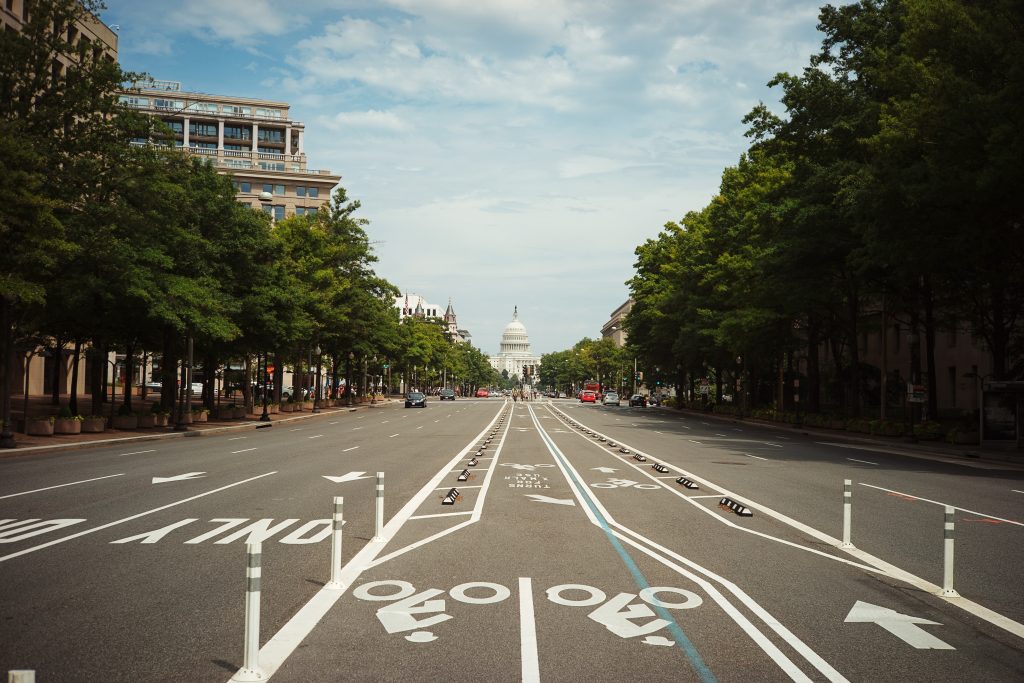
That’s right, the United States’ capital is among the best cities to live in if you’re keen on biking for any reason, be it work, leisure, or anything in-between.
Its continued innovation to improve the existing cycling network and present culture surrounding this mode of travel earned it a score of 3.2 by the People for Bikes community.
One of the most unique and exciting things about biking in Washington, D.C. is the capital’s recent development project, connecting the city to Maryland, of all places.
A four-mile stretch of the Anacostia Riverwalk to Maryland’s Anacostia Tributary Trail System, forming a network of 40+ miles.
Now, cyclists can ride throughout the linked pathways to visit historical and culturally significant landmarks such as Kenilworth Aquatic Gardens, the National Stadium, and the National Mall.
Within the city itself, travel is rated equal to that of Santa Barbara’s cycling network, at a solid 38. The most easily accessible local amenities (via cycling) include:
- Groceries
- K-12 educational institutions
- Recreational parks
Still, these aren’t the only places bike commuters travel to day-to-day.
In support of D.C.’s cycling community, officials launched the GoDCGo program to improve the bike-friendliness of corporate offices.
The initiative is focused on boosting public transit to be 50% biking, dramatically lifting the city’s current bike commuter rate of 4.6%.
Further, they introduced an ordinance* in 2014 to incentivize businesses with 20 or more employees to encourage workers to hop on a bike instead of a car on their way to work.
*This ordinance is known as the Commuter Benefits Law, introduced in the Sustainable D.C. Omnibus Amendment Act of 2014.
Missoula, MT
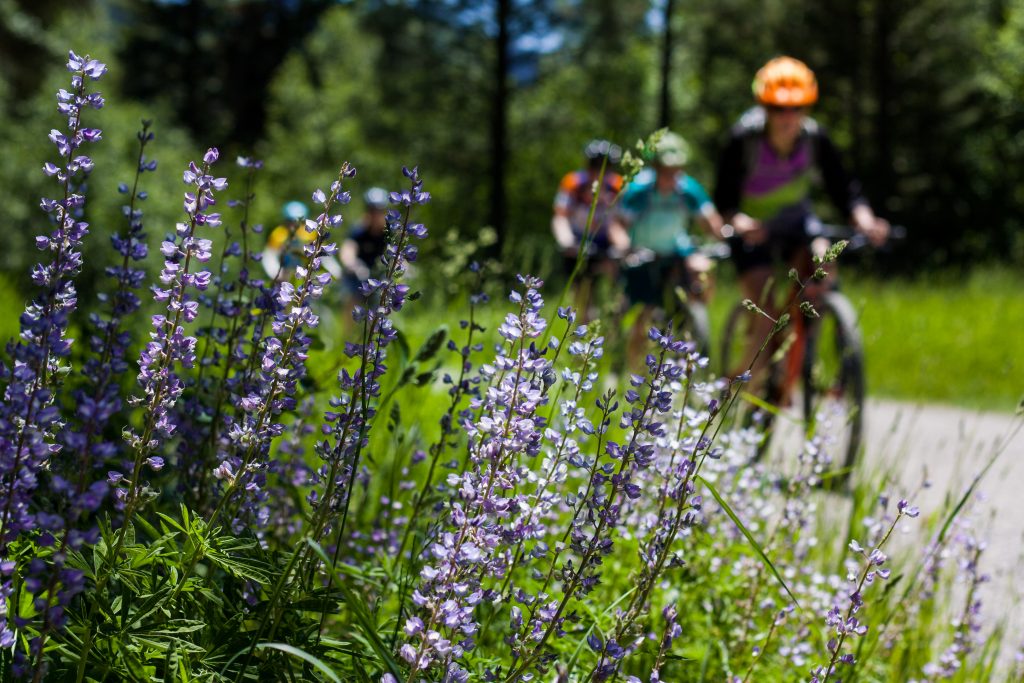
Missoula has repeatedly ranked in the country’s Top 5 and Top 10 lists for the best bike-friendly cities in the United States and earned a score of 3.2.
They’re not afraid to flaunt it either!
The city’s official website boasts about the municipality’s 22+ miles of off-street bike trails that all coincide with 40+ miles of on-street trails.
When surveyed, more than half of the Missoula population (an estimated total of 119,600 in 2019) reported that they had ridden a bike in the last 30 days.
Authorities want nothing more than to encourage the continuation and growth of this biking culture.
In fact, to make it easier for cyclists to get around, they provide an interactive cycling map on their municipal website and offer printed copies for free in city offices.
There’s even an app (My City Bikes Missoula) to guide those who are just getting familiar with navigating their extensive network.
Interestingly, the People for Bikes group rated the network at only 26, showing just how vigorously the surveyors measured the ease of transit via bike.
Still, one amenity with the best access via bike is recreational parks.
So, if you’ve got a taste for the outdoors (of course you do, you’re a cyclist!), you’ll be happy with how easily you can navigate to the nearest public park.
Finally, Missoula is home to Adventure Cycling, a group established in 1973.
They are 52,000 members strong and have collectively mapped over 50,000 miles of cycling routes. Their initiatives all center on welcoming others into a community of vibrant adventure and discovery.
Rogers, AR
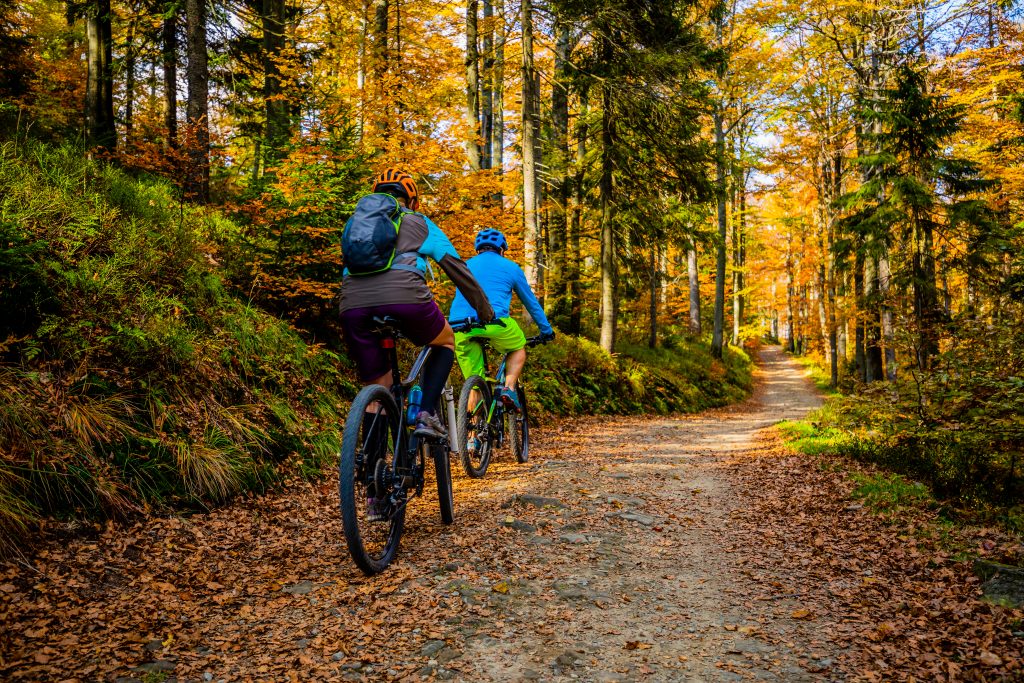
Ok, let’s be honest. When imagining where America’s most bike-friendly cities would be, such a midwestern state like Arkansas doesn’t readily come to mind.
This is especially true when it’s pitted against sunny California, and regions with huge, nationally renowned metropolitans like Wisconsin—see Milwaukee—and the District of Columbia.
Yet, Arkansas doesn’t back down when it comes to how they prioritize their biking community.
In fact, Rogers earned an even better bike network score than some of the cities listed here so far, landing at 33.
Overall, though, the city earned a 3.2 from the People for Bikes. What about Rogers makes the city so perfect for cycling, though?
For one, their participation in Northwest Arkansas’ efforts in recruiting new cyclists into the great sport of mountain biking (my favorite!) has not gone unnoticed.
These exact initiatives drew the International Mountain Bicycling Association’s and Bike Magazine’s attention to nearby Bentonville to host their 2017 Bible of Bike Tests event.
In another gesture to illustrate their dedication to the cycling community, Rogers encourages its local business owners to engage in the virtual Bike-Friendly Business Bootcamp.
This program shows entrepreneurs how they can welcome new customers from the cycling community and provide a more accommodating workplace for employees who commute via bike.
While you’re riding around, getting to know the locale, some of the most easily accessible (and most enjoyable) places you should visit include:
- Historic Van Winkle Trail
- Karst Loop Trail
- The East and West Wolf-Den Loop
- Veterans Memorial Park
- Turtle Creek Trailhead
Fort Collins, CO
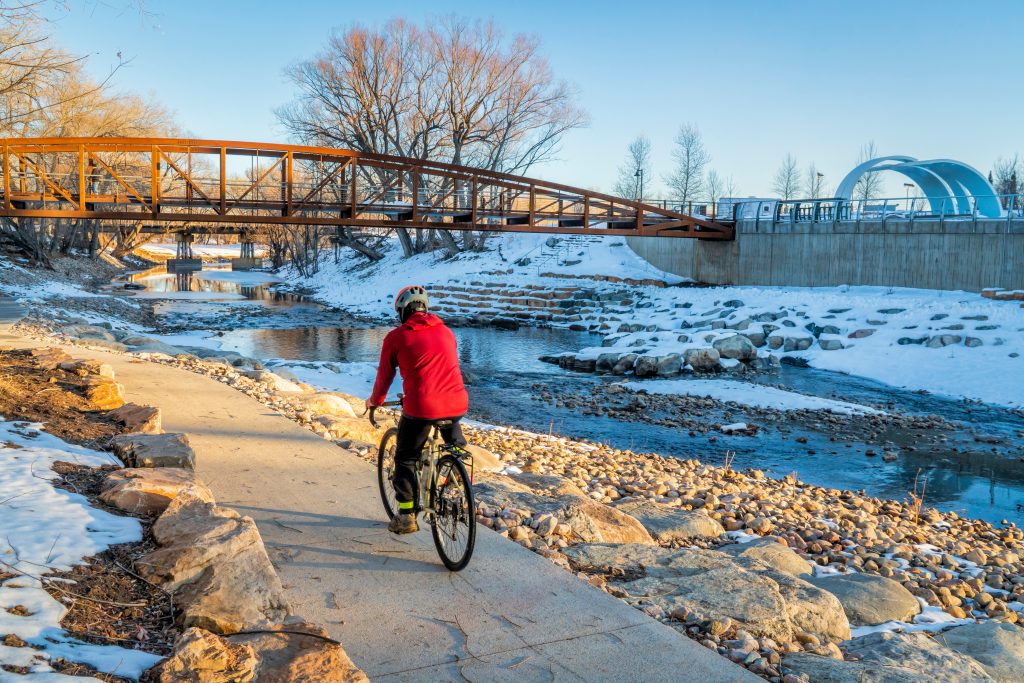
Fort Collins has truly capitalized on its flat terrain to craft an incredible cycling network.
One of the primary points of pride is that their city contains more than 280 miles of bike lanes in addition to over 30 miles of multi-use trails.
Based on this alone, it’s easy to see why People for Bikes rated their cycling network at 55 and the overall city at a 3.2.
A transit system this vast can easily get overwhelming. To help the locals and tourists, the city offers an online bike map to guide you through each path.
Even better, they’ve crafted a cycling tourist extravaganza, embodied in the Bike the Sites collection, which features tours of local breweries, environmental landmarks, and historic cultural points.
You’ll enjoy the ease of access when it comes to such tourism, as Fort Collins clocked in at 90 (the highest of all the cities listed here), specifically for trails’ accessibility.
Additionally, through FC Bikes, municipal leaders plan to improve the city’s cycling infrastructure, the quality of educational programs and generally encourage their constituents to get cycling through activities like “Bike to Work Days.”
Even with all this innovation, Fort Collins has not overlooked the importance of public safety—a crucial component of a thriving local cycling culture.
While encouraging people to cycle more often, they’re also educating drivers on how to share the road with cyclists through the Bicycle Friendly Driver Program, ensuring a positive experience for everyone on four and two wheels.
All these efforts began in 2014 with their official city Bicycle Plan, and Fort Collins has shown no signs of slowing down since then.
Summary
Cycling around town is rapidly becoming the new standard across the States as public awareness about environmental degradation and collective health strengthens.
If you live in any of the cities above (or want to visit them), you’ll have no trouble getting around on your two wheels, and will find immense support and encouragement not only from the local cyclists but the municipal authorities, too.

Michael
Hi, my name is Michael and I'm the chief editor of this website.
I've been riding all sorts of bikes for over a decade now and don't plan on stopping anytime soon.
Everyday, I learn new things and want to share my experiences with others.
Ready to join me on my journey?




